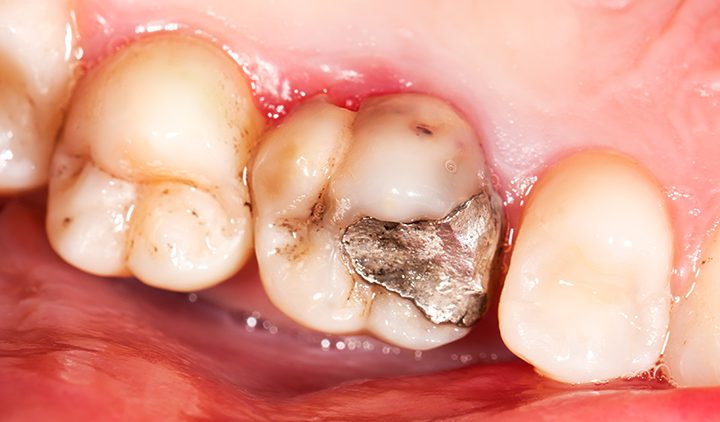Gold foil was once the restoration of choice.
As the price soared, dental amalgam came into use. Dental amalgam is a powder mix of silver, tin, and copper. To make the powder a workable substance, liquid mercury is mixed with the metals which then sets up to be a hard metallic substance that conforms to the shape of a dental cavity. The controversy of this filling material comes down to the use of MERCURY, a known toxin to the human nervous system.
Most mercury release in dentistry occurs when placing the amalgam filling or when removing an old filling. It is proven that a dental dam lessens the mercury exposure to the patient. The amount of mercury exposure from dental fillings is low, about the same as from a can of tuna fish for lunch. But dental offices through time can add a significant amount of mercury to a system’s waste water.
So states, starting with California (go figure), are outlawing the use of amalgam fillings in favor of composite fillings. Colorado has mandated the use of amalgam separators in a dental office to isolate and properly dispose of old amalgam filling material. But insurance companies still expect dentists to use this material and often “downgrade” the reimbursement of a composite filling to an amalgam filling.
Dentistry is seeing a significant shift to resin filling materials. The old amalgams were tough, resistant to saliva, and cost-effective. But, with time, they expand, causing teeth to fracture. They also corrode, causing leaking fillings and recurrent decay. They still have a place in dentistry when restoring a tooth that cannot be isolated or kept dry. Sometimes a “last ditch” effort to keep a tooth.
But, is it enough mercury to justify banning the material? Why haven’t dental students grown second heads after all the scraps of amalgam they live in??




